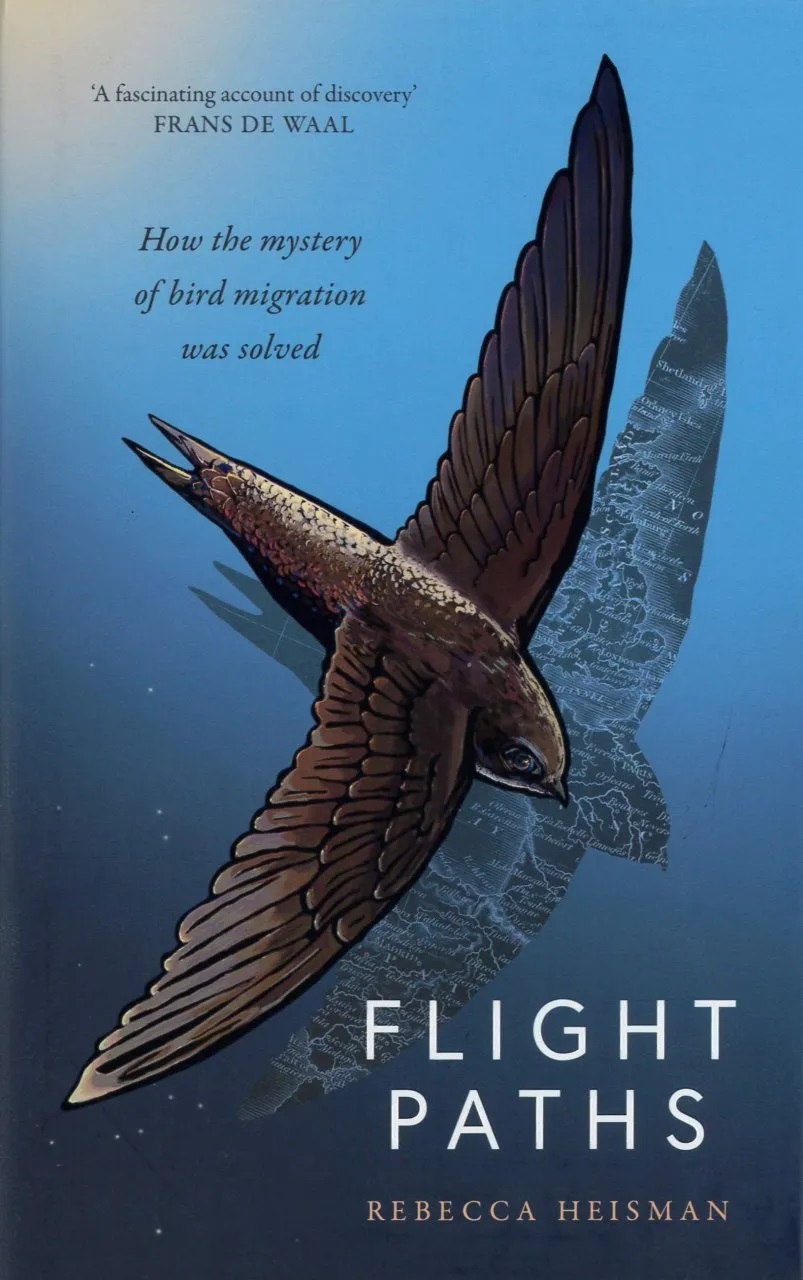Flight Paths: How the Mystery of Bird Migration Was Solved

- Flight Paths: How the Mystery of Bird Migration Was Solved by Rebecca Heisman.
- Swift Press, 2023. 264 pages.
- ISBN: 9781800752931. Hbk, £16.99.
Flight Paths offers a breathtaking journey through the world of avian migration studies. Authored by Rebecca Heisman, a zoology graduate with career experience in the American Ornithological Society, the book provides a fascinating look at how a disparate group of scientists, enthusiasts, birders and naturalists sought to understand the mechanics of avian long-haul flight. Focus is placed on the last century or so, though earlier enquiries from Native American oral traditions, the writings of Aristotle and the musings of 17th-century British physicist Charles Morton (who theorised that birds must fly to the Moon when they migrated) get a brief mention at the outset. As Heisman points out, this study is not so much about the birds and more about the various humans who conspired over time to better understand long-distance migration.
We journey first through the world of bird ringing, learning that only a tiny percentage of 'banded' birds are ever captured twice. We learn of the artistic licence of John James Audubon, an early pioneer of the practice, of the dedication of American ornithologist Leon J Cole, the migratory habits of House Finches introduced to the eastern USA from the 1940s, and the scientific work of the Bird Banding Lab and its explorations of avian flight, climate change and adaptation. From here, focus turns to the skies and studies of nocturnal flight patterns including the mammoth 'Bitterroot Array' (2018-19) that encompassed 52 recording sites in Montana.
Chapter three leaps into the WW2 context of radar and the important studies of British researcher David Lack into the traces left by gannets on radar equipment, before a sonic illumination from early blips to digital tracking and geolocation, ending on a glimpse at Birdcast and its campaigns for light pollution reduction in city skyscrapers. Next, we take in the realms of radio telemetry and satellite technology, including the astonishing 'E7', a godwit tracked in real time across the Pacific from New Zealand to Alaska in 2007, before surveying the capacity of isotope technology to pinpoint migratory movements by analysing feathers. The final two chapters turn to other kinds of inventories, in the form of the feather library and citizen science backyard recording-counting-logging initiatives.
Flight Paths is a lively, insightful and entertaining read which vividly brings out the personalities and the technologies invested in tracking avian movements, running alongside which is an autobiographical track that lightly reflects on the author's personal story, through career experience, cancer and COVID-19. Described on the back cover as an 'ornithological arms race', the book nimbly takes in a diversity of complex technologies to communicate the myriad ways we as a species have tried to acquire knowledge on our feathered friends. The reach is impressive without being overly scientific and Heisman writes with an animated style that brings her subjects to life in all their passions and eccentricities. The focus, while worldwide, is predominantly placed on the American context. This is a valuable history in itself, of course, but also one that left me wanting to know more about the British 'leg' of this story, the Cold War contexts of migrations across geopolitical divides and how this world of knowledge-making translated into international protection measures.
All told, this is an engaging story about how a group of inspired amateurs and professionals from various fields became invested in understanding avian movements and of the scientific devices they deployed to answer the mystery of bird migration. An end section entitled 'sky full of hope' delivers an important parting message on the joys of watching and tracking avian migrants, not only to learn about movements and distances, but also to build a picture of population numbers and threats to survival. As Heisman puts it, 'to save them, we need to know them.'

